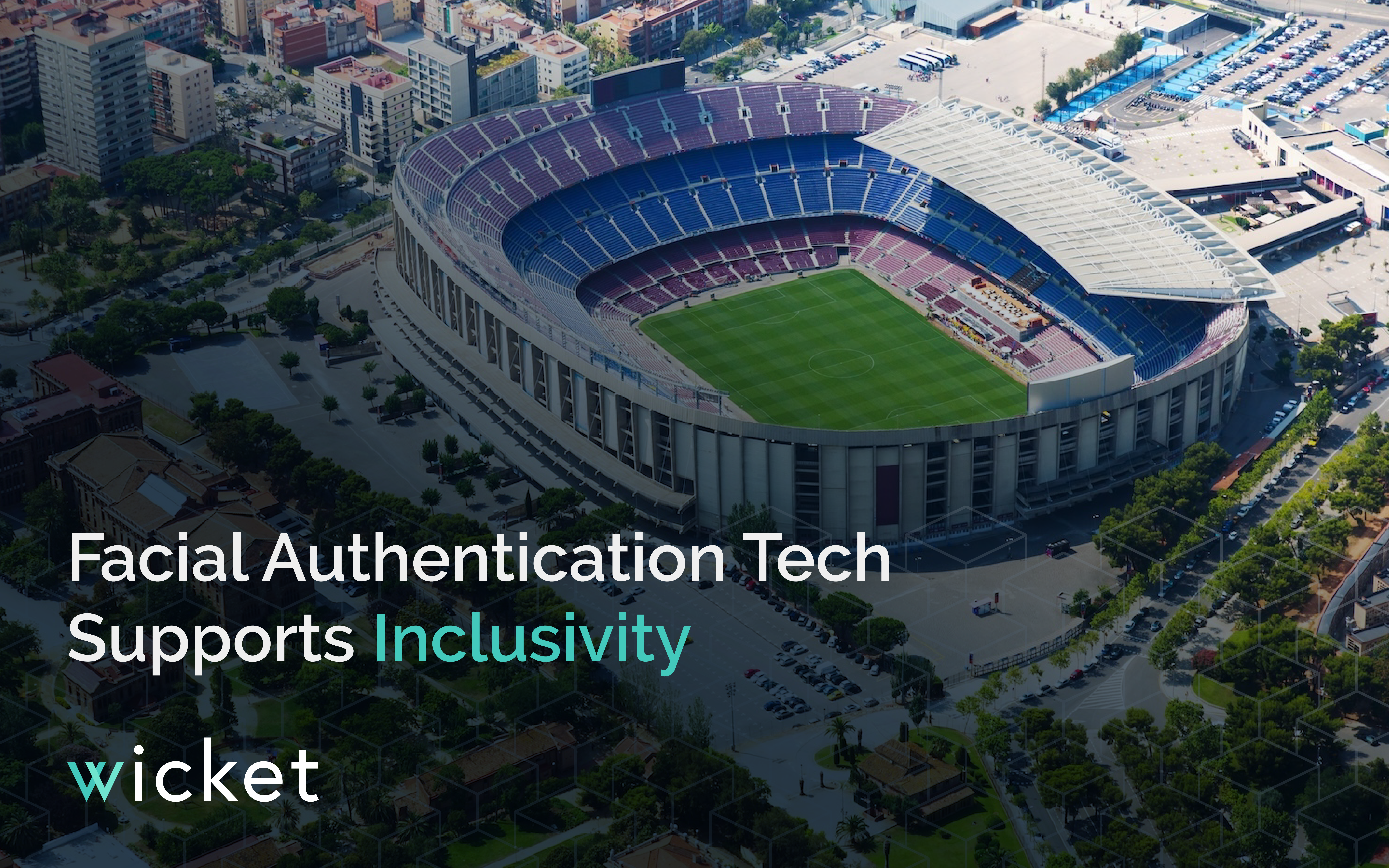By Cindy Fitzmartin, Wicket
Beyond convenience: Facial authentication tech supports inclusivity at stadiums and live events
Facial authentication technology is making waves in the world of live events. While some raise concerns about privacy, there’s a positive aspect often overlooked: Its potential to enhance inclusivity for attendees.
Here’s how facial authentication can create a more welcoming experience for everyone:
Faster, Smoother Entry: Long lines create a barrier to accessibility and can be a significant hurdle, not just for impatient fans, but particularly for those with physical and mobility limitations or sensory and communication challenges. Imagine someone with dexterity issues struggling to hold their phone or fumble with a physical ticket – a simple task that can become a frustrating obstacle. This is where facial authentication technology steps in to revolutionize the entry process. By eliminating the need to search for tickets or IDs, facial authentication offers a quicker, more seamless experience for everyone. This is especially beneficial for individuals with dexterity limitations or those who might find navigating a crowded environment overwhelming.
Reduced Contact: Attendees with compromised immune systems, sensory issues, physical disabilities, or those who use wheelchairs may find navigating crowded ticketing lanes or concession stands challenging. Facial ticketing combined with facial payments allows for a streamlined, contactless experience, minimizing physical interaction.
Assistance at Your Fingertips (Well, Face): Facial authentication integrated with ticketing at entry can identify attendees who might require assistance. This allows staff to proactively offer help, whether it’s guiding someone to accessible seating, providing messaging in their preferred language, or simply answering questions. Imagine walking up to the entrance and being greeted by a friendly message on the screen, displaying your name or welcoming you in your preferred language. This small touch of personalization can go a long way in creating a more welcoming and inclusive environment for all fans.
The future of sports is inclusive
Gone are the days when stadiums were simply concrete cathedrals dedicated to the roar of the crowd. Today, there’s a growing trend of stadiums transforming into vibrant hubs of community engagement. This shift goes beyond the traditional game-day experience. Sports venues are now actively seeking ways to cater to a wider range of needs, interests, age groups, and fans, ensuring there’s something for everyone.
Many stadiums have enhanced their accessibility features, ensuring that all fans, including those with disabilities, have a comfortable and inclusive experience. Efforts include sensory rooms for fans with autism, assistive listening devices, and improved entry, signage, and navigation for individuals with mobility challenges.
Facial authentication technology has the potential to revolutionize the live event experience, not just for convenience, but for inclusivity. By prioritizing accessibility and user privacy, stadiums and event organizers can leverage this technology to create a welcoming and engaging environment for everyone.
This content in this post is provided by Wicket, one of the sponsors of Stadium Tech Report.










